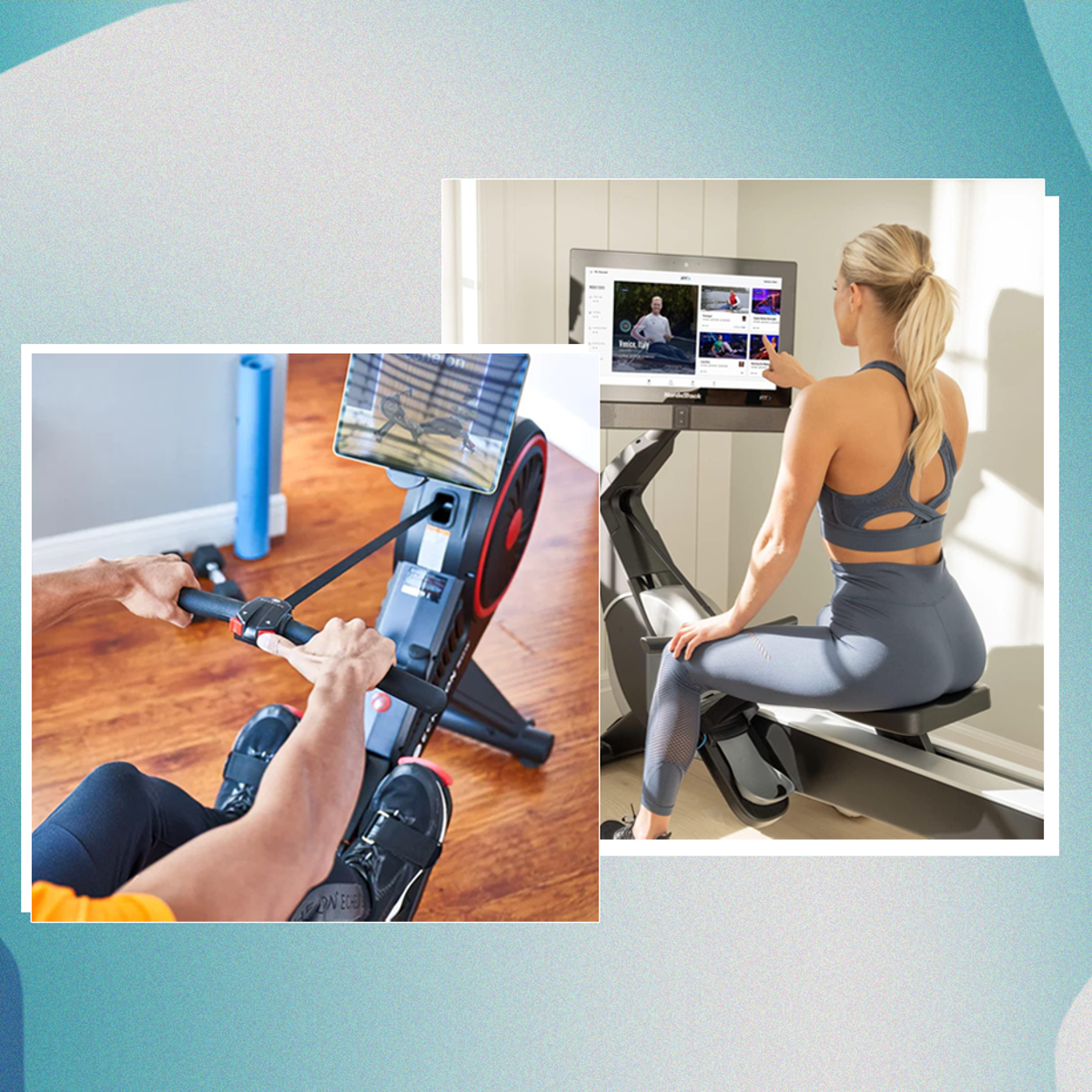Rowing machine FAQs
Is it safe to row every day?
As with any exercise you’re new to, it’s important to gradually build up strength and stamina balanced with rest days. So, while it is safe to row every day, it is dependent on how intense your workouts are.
However, be wary that over-training can lead to injuries and your body needs time to repair muscles, so, if you’re buying your first rowing machine, start slow and build up to stronger workouts.
What muscles does a rowing machine work?
Rowing can provide a full-body workout, as it activates your legs, arms, back and core muscles. The sliding seat works your triceps, hamstrings and quadriceps, while your biceps, glutes, hamstrings and abdominals are put to work when you pull all the way back with the handle. As a result, rowing can strengthen your back, arms and abs.
What is the difference between a magnetic, air and water-powered rowing machine?
If you’ve just started the search for a rowing machine, you’re probably aware this isn’t a simple task. Aside from filtering through many brands and settling on a budget, there’s also the big question of what type you should go for – magnetic, air or water-powered?
- Air – These devices provide resistance by blowing air through a flywheel, meaning the harder you pull, the faster the fans spin and the more resistance you get. Fan-based rowing machines are typically the best value, which is why they are the go-to choice for most commercial gyms. However, they can be noisy.
- Magnetic – As the name suggests, these rowers use two strong magnets that move past one another to create resistance. Because there’s no friction, magnetic machines are fairly quiet and are generally more compact.
- Water – What separates these machines from the others is that they work by using a transparent drum that’s full of water. Resistance is created by paddles that turn as you row and many claim the action more closely replicates the feel of rowing on water. However, these machines tend to be the most expensive.
How much do you need to spend?
The type of rowing machine you’ll buy is heavily dictated by how much you’re willing to spend but there are plenty of options to suit all budgets – you can spend anything from £100 to well over £1,000.
Those at the lower end of the price scale will still do what you need them to, but you may notice the quality isn’t great. However, if you’re new to rowing, this could be a good place to start, as you can make sure you really enjoy it before shelling out.
For £100 to £750, you will be able to get your hands on an air or magnetic machine, which is likely to have more features than budget versions, such as different resistance options and preset programs.
If you’re able to spend upwards of £750, you’ll be able to get a high-quality machine that does it all. Most rowers in this price range will be quiet, offer varying levels of resistance and have a digital monitor that can track your workouts. If it’s a more high-tech water resistance model you’re after, expect to pay £800 or more.
Do I need a rowing machine mat?
When it comes to deciding if you need a mat, the first thing to consider is your flooring. Rowing machines are heavy duty, which means they could damage a wood or carpet floor. If you plan on doing high-intensity workouts that may cause vibrations, a mat should be able to absorb these shocks.
You may also want to consider what your living space is like. If you live in a flat, a mat can reduce noise that might leak into your neighbours’ apartments, while also keeping your machine on a stable surface.
Does the level of resistance on a rowing machine matter?
In short, yes. The higher the resistance level, the harder your workout is going to be. The idea is to replicate rowing on a real boat where you’d experience a drag from the wind. So, if cardio is your thing, you’ll want to have a larger drag. Alternatively, if you only plan on using your rowing machine for low-intensity workouts, you may prefer a lower resistance.
Many air rowing machines will adjust automatically, depending on your stroke size – but do be aware that using a higher resistance may make your machine noisier.
The verdict: Rowing machines
With its excellent water mimicry, the Hydro wave will definitely help keep your home fitness afloat, and we think it actually makes the original machine a little redundant, even though it has a smaller, static screen. The curated content you get from the Hydrow all-access membership is second to none and the online instructors manage to inform your rowing technique and output and still keep you engaged, so you’re motivated to keep hitting your fitness goals. Plus, it delivers all this without making too much of a splash in your bank account.
For more at-home gym equipment, read our round-up of the best exercise bikes

